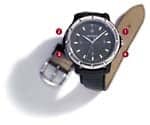Hard truths and “straight talk” on hearing better

|
| Jay B. McSpaden, PhD, CCC-A, BC-HIS, is an audiologist who retired from private practice and currently works part-time as a hearing instrument specialist in Jefferson, Ore. |
This blunt letter focuses on one simple truth: There is not enough money for me to work with a patient should they refuse to participate in (at least) some basic recommended exercises that are necessary for success with a hearing instrument. Life is too short, and there are about 31 million people in the United States who need hearing help. A person needs to “own” their hearing loss and play an active participatory role in hearing better.
There is a saying that luck is the residue of hard work, and the more you practice, the luckier you get. If you will work diligently for the first 30 to 45 days of your hearing aid acclimatization program, then 1 year from now, you will wonder how you ever questioned the value of hearing aids.
Hearing aids have been designed for the purpose of taking full advantage of a person’s residual auditory system—in other words, the hearing you have left. Those hearing structures that you have lost due to a lifetime of recreational and occupational (including military) noise, ototoxic chemicals (ranging from aspirin to chemotherapy), “the aging process,” and your inherited genes are essentially lost forever. We can’t bring them back. But what we can do is optimize the use of your remaining hearing—which, in the vast majority of cases, is more than enough for you to hear well and communicate effectively when sound is amplified appropriately.
It’s obvious that understanding speech is extremely important and probably the main reason you have come to our practice. However, there has been a gross misunderstanding for more than 40 years that auditory habilitation/rehabilitation is about understanding speech, reading it, producing it, listening to it, hearing it, processing it, and assigning meaning to it. The “geniuses” and decision-makers—those who craft extremely important policy at Medicare, Medicaid, the insurance commissions, etc—authorize therapies for this problem when indicated “as necessary (by an audiologist) for reimbursement” only by speech/language pathologists who function as “teachers of speech” only on physician’s orders and only to those with impaired hearing and with normal vision.
However, relative to most of my patients, this policy is fundamentally flawed. These professionals are only permitted to teach speechreading. That’s the wrong solution for the wrong problem and, clearly, the wrong approach to a rather straightforward situation—namely, a need for understanding speech via “audition” (the sense of hearing). There are also limitations to the “teachability” of speechreading, as it is based on the ability to make perceptual closure. This is a skill not easily, or often, taught. “Watch my lips” may be the professional’s mantra, but it can be a difficult task for some people to perform.
Finally, one of the sad by-products of this policy has been that, due to a lack of reimbursement and economic recognition for the value of “aural rehab,” the audiological field has de-emphasized its most important task. That, too, is clearly wrong. Our job (my job) is to provide you with a customized set of solutions that will allow you to hear and understand speech and your auditory environment—an individual program suited to your auditory capabilities and personal needs.
And I will do this … with your help.
Aural Rehab: Let’s Start Here
There are 26 letters in the English language arranged into 44 phonemes. A phoneme is a letter, or group of letters, that has a specific sound in our language, like the /th/ in the word “three” as opposed to the /th/ in “those.” In large part, it is the apprehension and comprehension of these phonemes that comprise the acquisition of speech processing facility and the mental image of fluency in communication.
Beyond amplification, you should know that there can be many different components to aural rehabilitation, including auditory training, training to improve speech processing and cognition, and training in the use of contextual cues. However, in my opinion, none is as crucial as reading out loud in a normal conversational voice for at least 30 to 45 minutes per day while wearing your hearing aids. You can read anything you wish: your favorite newspaper, a book, a magazine, The Bible—whatever you like. The best thing would be to borrow a grandchild and read Dr. Seuss to them, because of all that wonderful, alliterative language. This also strikes at the heart of what we’re trying to accomplish: getting used to processing these phonemes while enjoying a renewed sense of communication—getting your auditory system and brain working together and receiving the information that you were not receiving on a regular basis before you obtained hearing aids. Poetry and joke books are also ideal. Your challenge is to get used to and enjoy verbal communication again.
Phonemes—when processed through a digital hearing instrument—are not exactly like the unaided phonemes that you could hear when you were 17 years old, and they can also be quite different from those processed through older analog devices in that they have the potential for greater content and character. The energy in these phonemes is arranged in “formants,” which are the energy concentrations within these words. When you read aloud, your brain knows with 100% accuracy what you said. You are not listening for “content”; instead, you are practicing the “processing of the phonemes” through your new digital hearing instruments. It can be a very different sound. As repetition familiarizes your brain with the phonemes, meaning is assigned and more accurate “hearing” is achieved.
These hearing skills are not an accident, but rather a deliberate application of “effort to endeavor.” They are not obtained by luck, but rather by practice. And this reading exercise is not an option in my office; it’s required reading.
The author and HR grant permission to duplicate or modify this article. Correspondence can be addressed to HR or Jay B. McSpaden, PhD, at .





